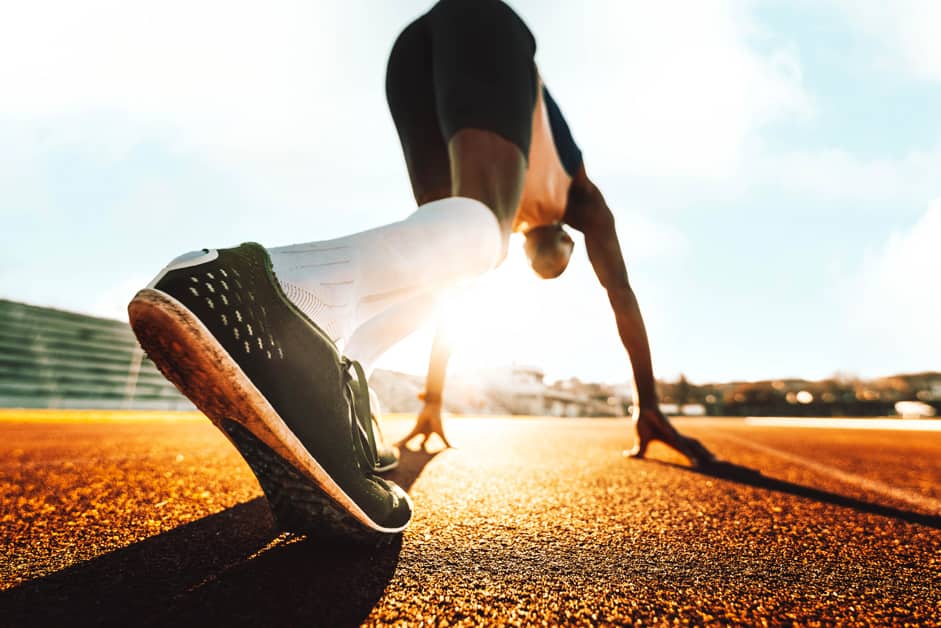Introduction
Hiking and trekking require proper footwear. It’s not just for comfort, but safety too. For those with knee pain, it’s very important to get the right type of shoes. This helps prevent injuries and makes sure they can enjoy hikes and treks without any discomfort.
In this article, we’ll talk about the importance of proper footwear for people with knee pain.
Overview of the importance of proper footwear for hiking and trekking with knee pain
Whether you have knee pain or not, the right shoes/boots are key for a good hike. They protect your feet, support your ankles and arches, and cushion your feet on hard terrain. People with knee pain should get shoes/boots to help reduce strain on the joints.
Hiking boots are usually made of leather and synthetic material. Leather is often used because it adjusts to your foot over time. Most boots go up to the ankle and these give more stability. Choose what suits your needs.
When shopping, look for features like:
- Gore-tex waterproofing (good if you’re crossing streams)
- Removable insoles (these can be taken out to dry)
- Midsole cushioning (for shock absorption)
- Supportive sole (lugs for uphill/downhill grip)
- Heel counter reinforcement (for downhill stability).
Also, check for crampon compatibility and ice Grippers for all terrain traction.
Types of Footwear
Knee pain while trekking or hiking can be eased with the right type of footwear. Various shoes or boots are made specifically for this purpose. Each one has its own pros and cons. Let’s examine them more closely:
Hiking boots
Hiking boots are essential for hikers and trekkers. Especially for those with knee pain due to an injury or condition. Boots provide support to ankles, calves and knees while keeping body in natural alignment. Plus they are waterproof and breathable.
When choosing boots, there are specific features to look for:
- Cushioning in heel and toe box. This helps reduce pressure on joints and protects from bumps.
- Flexibility for natural movement and lateral stability.
- Rugged outsole design for grip on slippery surfaces. Vibram rubber for max traction in wet weather.
- Proper fitting for comfort. Try on multiple pairs before investing.
Trail running shoes
Trail running shoes are perfect for off-road activities. They are lightweight and have a strong grip for tough outdoor conditions. They are great for people with mild overpronation, as they have an inward curve. This provides steadier comfort than regular running shoes.
- The outsole traction is made from thicker rubber, making them stiffer than traditional running sneakers.
- Trail running shoes also have more arch support.
- You should make sure to select a pair that fits snugly around the ankle and toe box.
- Finally, since trails can be rugged, look for cushioning and stability features in the heel of the shoe.
Waterproof shoes
When it comes to outdoor sports and activities in wet weather, waterproof shoes are a must. They keep your feet dry and protect against the elements, especially in muddy, puddle-filled situations! Different materials provide different levels of insulation and breathability; leather, nylon, suede, and synthetic materials all work great. If you have knee pain, mid-sole cushioning is key for shock absorbency. Look for molded rubber soles for stability and grip on wet surfaces, and check for seam-sealed construction so water won’t seep through.
When choosing waterproof shoes, factors to consider are:
- Insulation against cold.
- Ability to keep water out.
- Grip on wet surfaces.
- Breathability for comfort.
- Mid-sole cushioning for shock absorbency.
Sandals
Sandals are open-toe and heel footwear. Straps or bands secure them around the foot. Designs range from dressy to casual, classic to fashion-forward. Features include adjustable ankle straps, molded insoles, and breathable materials. Modern styles may have closed toes and shanks made with foam or beads.
All sizes available for men, women, and kids. For comfort in warm weather, and extra style points for any season or occasion.
Benefits of Wearing Proper Footwear
Knee pain? Hiking or trekking? Wearing the right shoes has many advantages. Stability is improved. Falls and slips are prevented. Arch support is provided. Comfort increases. Foot pain is reduced. Joint pressure is lessened. This is especially important for those with knee pain.
Let’s examine the benefits of proper footwear for hiking and trekking with knee pain:
Improved stability
Proper footwear is key for balance and stability while hiking on rough terrain. Sturdy shoes with good grip are necessary to avoid slips and falls, which can be more serious than they appear in mountainous regions.
The right shoes also give stability around the ankle joint to help prevent sprains while walking on rocks and roots. This support reduces discomfort and improves performance since lightweight shoes have less cushioning to absorb shock, reducing the impact on the knee joint.
Footwear with adjustable lacing can also help stability by allowing individualized tightness for specific trail conditions. For instance, thicker socks might need more tension for a secure fit when going through streams or mud puddles. Moreover, adjustable lacing patterns offer better arch support; this is important since people who feel knee pain often have inflexible feet and need extra support.
Increased ankle support
Wearing the right shoes can boost your health. Most importantly, they give you better ankle support. This prevents falls and injuries. It also reduces foot fatigue and soreness.
Ensure your shoes are snug, not too tight or loose. They should support your feet, but still let them move naturally. Look for arch support, cushioning, and even weight distribution. This can help stop back pain and long-term issues like stress fractures and tendonitis.
Investing in supportive shoes pays off in short-term comfort and long-term health!
Improved traction
Friction helps us move. It prevents slips and falls, both indoors and outdoors. Shoes with the right type of sole are important for grip. This is especially true when walking on surfaces with reduced friction, like icy roads. Footwear also protects feet from sharp objects. It provides balance when making impact with the ground while running or playing sports. This allows athletes to perform better without risking injury due to slipping.
Reduced stress on the knees
The right shoes can help reduce knee stress when hiking or trekking. Your heel and ankle should be in contact with the ground always when walking. The perfect pair of shoes will give extra cushioning and support to your ankles, as well as other leg and joint areas. This can help ease pressure on knee joints and soft tissue, reducing pain on hikes.
Rugged boots are usually the best for hiking or trekking. They can protect against obstacles like stones, rocks, roots, and other organic matter. Quality boot soles will also have better arch support than street shoes, which helps spread weight evenly across feet during movement.
It’s essential to tightly lace up your boots. This stops excessive ankle movement that can lead to more knee joint stress. A good-fitting hiking boot should feel comfortable – try before buying!
Tips for Selecting the Right Footwear
Deciding the correct shoes or boots is crucial for your trekking trip. If you experience knee pain, the right pair of shoes can make a huge difference in terms of comfort and safety. So, what kind of footwear will help those with knee pain while trekking?
Consider the terrain and weather conditions
Choose the right footwear for the terrain and weather you’ll face. Get a shoe or boot with the right support, comfort, and traction.
For example, on flat terrain in warm weather, a comfortable, supportive shoe or sandal is best. Look for one with breathability and traction. Lifestyle shoes can be great; they give more cushioning than trail runners and more aggressive outsoles than casual shoes.
For rougher, rockier terrain, look for well-crafted outsoles with special features, like self-cleaning lugs for mud.
Boots in winter need insulation and protection from moisture. Varying thicknesses of insulation, or waterproof membranes, can help. Also check cushioning – it must protect against impacts on long treks and prevent energy loss due to inadequate foot support. Otherwise, you may tire and get exhausted quickly.
Choose the right sole
Choose the right sole for your shoes. Consider what activity you’ll do in them. Rubber soles work well outdoors. Leather or synthetic ones are good indoors. A thick sole gives cushion and shock absorbency. Thin, hard ones can cause strain. Extras like arch support or tread pads can add to comfort.
Check the arch support
It’s essential to choose shoes that provide the right support when hiking or trekking. Look for a deep, thick part of the inner sole close to the arch in the heel area. It should fit your arch perfectly. Make sure it doesn’t put any pressure on this area. The arch support should be cushioned, supportive and stable.
Also, ensure good support at the toes and heel to reduce potential injury risks when walking or trekking. Look for additional cushioning or stabilization in these areas for comfort and stability. Plus, check for an insole lining that wraps around your heels for extra protection when stepping or on rocky terrain.
Choose the right fit
Choosing the right footwear is essential for foot health, comfort and performance. Each of us has unique feet. We may suffer from different pathologies, and have different needs based on activity level. Finding a fit that conforms to the shape of our foot is an important consideration for custom-made shoe programs.
Factors to consider when evaluating the fit: toe box width, arch type and height, heel counter depth, midfoot stability, and volume control. Toe boxes need to provide enough space to avoid pressure on toes, and preventing bunions. People with high arches or flat feet may need additional arch support. Excessive room in the heel should be avoided to prevent blisters or intense movement during exercise. Proper volume control can provide individualized support and reduce impact at high velocities.
Remember: shoes should be snug around your foot when you first try them; the fit should not change much over time; and they should be comfortable from first use, no break-in period required. The wrong fit can lead to pain or discomfort which can affect activity level. Buy shoes for how they feel!
Conclusion
To wrap up, having the right shoes is a must for anyone with knee pain who hikes and treks. Shoes should have cushioning on the heels and arch support plus a non-slip tread. The fit needs to be just right so that no injuries or discomfort occur while outdoors. With the correct footwear, it’s still possible to enjoy hiking and trekking despite knee pain.
Summary of the importance of proper footwear for hiking and trekking with knee pain
Knee pain sufferers must select proper hiking and trekking footwear. It should support the knee, reduce impact on articulation when walking, and absorb shock from bumps in the trail. Footwear designed for rugged terrain is best. It should have a stiff sole, reinforcements at high wear areas, and moisture-wicking materials.
A correctly fitted shoe or boot will offer extra stability on descents and uneven ground. This stability can lessen knee stress from body weight and reduce pain while trekking.
Frequently Asked Questions
Q: Why is it important to wear proper footwear for hiking and trekking with knee pain?
A: It is important to wear proper footwear for hiking and trekking with knee pain as it can help to reduce stress and strain on the joints and muscles and help to protect the knees from further injury. Proper footwear should provide ample cushioning, support and traction to help absorb the shock and reduce wear and tear on the knees.
Q: What type of footwear should I use when hiking and trekking with knee pain?
A: When hiking and trekking with knee pain, it is important to choose footwear that is well-cushioned, has good arch support, and provides excellent traction. Additionally, it is important to find a pair that fits properly and is comfortable to wear.
Q: What are some tips for selecting the right footwear for hiking and trekking with knee pain?
A: When selecting footwear for hiking and trekking with knee pain, it is important to look for a pair that fits properly and is comfortable to wear. Additionally, it is important to choose a pair that is well-cushioned, has good arch support, and provides excellent traction.





